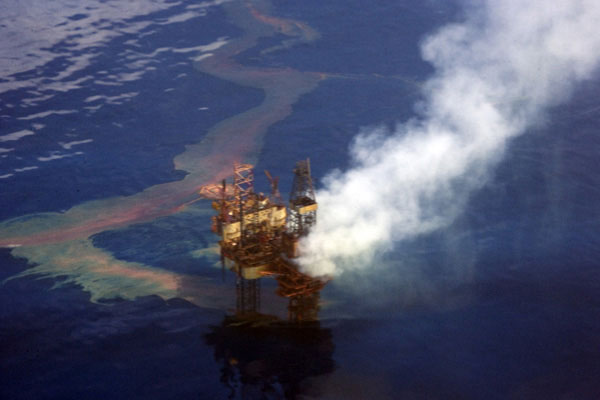Pollution on the Timor Sea continues to expand
In the face of pollution in the Timor Sea continuing to expand, Australian Ambassador to Indonesia, Greg Moriarty, said the Australian government still maintained its commitment and would continue to negotiate with the Indonesian Government to address the problem of pollution in the region East Nusa Tenggara sea.
Greg Moriarty said that the Australian side will continue to overcome the consequences of the Montara oilfield explosion on August 21, 2009 in the waters of the country, causing environmental pollution in Timor waters.
Earlier, Australia's energy company PTTEP admitted and was responsible for the Montara oil well explosion, polluting Timor waters.

West Timor Care Foundation (YPTB) chairman Ferdi Tanoni said the oil pollution caused by the explosion seriously affected seaweed farmers and farmers in Kupang district, Indonesia's East Nusa Tenggara province.
Seaweed production here has plummeted in the past two years, even many farmers have to quit their jobs because of investment losses, although seaweed farming sites are their main livelihood.
According to a report by an Australian investigative committee, the explosion caused about 2,000 barrels of toxic oil and condensate to leak daily in the Timor Sea, polluting more than 90,000 square kilometers in this waters.
Meanwhile, independent geologists in Australia and Indonesia said actual figures amounted to 5,000-10,000 barrels of oil and condensate, of which 95% of polluted waters were in Indonesian territory.
Current pollution of the Timor Sea has extended to the waters around Rote Ndao district in the Sawu Sea, south of Timor Island (including Kolbano and Wini in South Timor Tengah).
- Discovering 2,000-year-old Dong Son bronze drum in Timor Leste
- Beijing is blind in toxic gas
- 'Death zone' reappears in the United States
- Air pollution causes 7 million deaths
- The number of people who die from floods continues to rise, the country continues to penetrate Bangkok
- 1.2 million Chinese people die from air pollution
- China spent 277 billion USD to solve the problem of pollution
- China wants to keep the right to publish pollution indicators
- Beijing uses rain to wash away contaminated smoke
- Serious air pollution alarm in China
- Dead waters are spreading
- Beijing alarms on air pollution
 Is the magnetic North Pole shift dangerous to humanity?
Is the magnetic North Pole shift dangerous to humanity? Washington legalizes the recycling of human bodies into fertilizer
Washington legalizes the recycling of human bodies into fertilizer Lightning stone - the mysterious guest
Lightning stone - the mysterious guest Stunned by the mysterious sunset, strange appearance
Stunned by the mysterious sunset, strange appearance